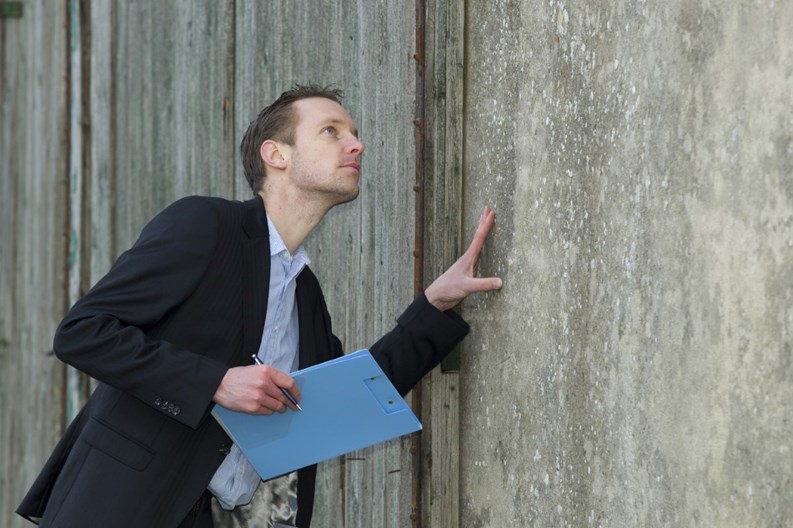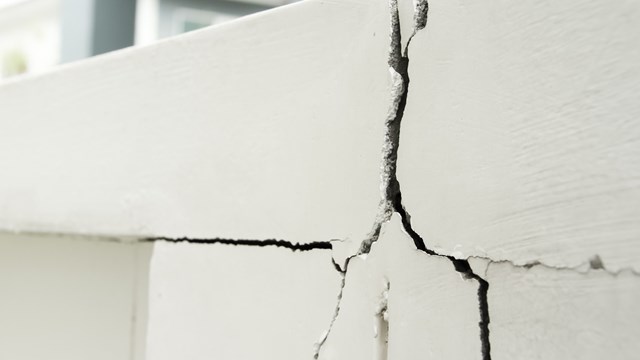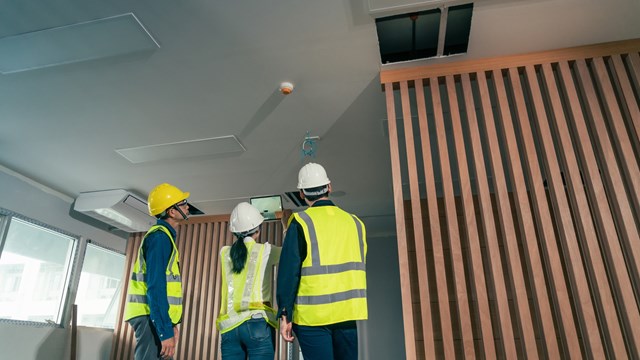Remember the old Timex watch jingle, ‘it takes a licking and keeps on ticking’? The gist of the ad is that no matter what you threw at it, a Timex watch kept working.
If you think about it, a building’s exterior is almost like a Timex watch. Each year, Mother Nature throws her best curveballs at South Florida developments—intense sun, hurricane-strength high winds, fierce rains and perhaps, a bit of frost in the winter months. And don’t forget the pollution, salt air, random damage from branches and debris, construction equipment and other items. Your exterior takes it all in stride, and (hopefully) remains standing strong. Well, almost. A building’s exterior can take a lot of abuse, but after time, it does begin to show wear and tear and needs some TLC.
“Florida in particular is known for being probably the harshest building environment in North America,' says Will Simons, president of the Florida regional office of Association Reserves in Miami. “We have this really crazy combination of lots of sunlight, lots of rain, lots of wind— it's a very unfriendly environment, which is especially true for coastal environments. The marine atmosphere is very corrosive and hard on metal finishes, railings and air conditioning equipment. Things just do not last very long the closer you get to the coast. Salt and moisture is a very destructive combination,” he says.
The Root of All Evil
Due to this harsh climate, structural issues with a condo or other residential building can run the gamut, and even depend on the most specific geography of a building.
“If you have an oceanfront high-rise, the air conditioning equipment may last half as long as air conditioning equipment that's just a couple miles inland,” says Simons. “If you're doing an inspection, you have to understand what is a normal life expectancy, not only within our tough climate, but especially so if you're anywhere near salt water.”
Common issues seen in building reviews almost anywhere include waterproofing deficiencies, such as failed flashing systems, cracked/split sealants, peeling/cracked deck coatings and vertical coatings; masonry deficiencies such as cracked/spalled brick or stone, and missing/failed mortar joints, along with concrete deficiencies like spalling, cracks, and delamination.
“Even when the building starts to hit 20 years old, you can start to have structural problems,” says Scott O'Connor, business development director of TRC Worldwide Engineering, Inc. in Fort Lauderdale. “Roof systems don't last that long, and the exposure we have in Southeast Florida—we have a lot of rain and a lot of sun—that tends to wear out roofs faster than other parts of the country.”
Reserve Studies are Key
Once problems arise, it’s important that associations have the extra cash around to fix them before they get worse. The Federal Housing Administration (FHA) requires that condominiums set aside at least 10% of their operating income towards a capital reserve account. For example, if the annual budget is $200,000, then the association must set aside $20,000 for its capital reserve fund.
“It's a good idea for associations to consult their attorney regarding compliance with state laws. Typically, governing documents require the association to keep their buildings maintained in a safe condition. Structural problems need to get repaired and should be done as required. Water intrusion problems are not structural problems, but typically will cause structural problems faster or to get worse,” says Terri Chalaire, director of Chalaire & Associates, Inc. an engineering consulting company in North Palm Beach.
Just as an individual needs an emergency fund in case of a job loss or an unexpected car repair, an association needs a financial reserve to take care of such major repairs as roof leaks or other exterior issues. Interestingly, a Community Associations Institute (CAI) study in 2012 found that cash-strapped associations are trying everything to make do. To compensate for a cash shortfall, the study shows 38 percent have postponed planned capital improvement projects, 35 percent have reduced landscaping services, 31 percent have reduced contributions to their reserve accounts, 23 percent have borrowed from the association’s reserve account, 16 percent have levied special assessments, 12 percent are allowing residents to perform minor tasks in the community and 6 percent have borrowed from banks and other lenders.
It is recommended that reserve studies are updated every three to five years. Routine inspections could be done even more frequently. “For condos, survey inspections of exteriors should be performed on a routine basis, every year or so,” says Chalaire. “This keeps the association knowledgeable about the locations and extents of any repairs needed. The results of an engineering survey for framing damage (cracks, spalls) can help the association plan for repairs on a consistent basis. Damages typically get worse exponentially with time, so older structures should be looked at more often,” she says.
Professionals also caution associations that building envelope studies shouldn’t be performed in-house as there are numerous safety factors to consider and Occupational Safety & Health Administration (OSHA) guidelines to follow.
There isn’t an optimal time of year to perform a building envelope review, per se, as all that is needed is a span of a few days, or more, depending on the size of the property and how many buildings or units are in the development. “Typically, a building survey of a condo can take a day to several weeks for the inspections, and a few days for the report. Access is usually required into balcony areas, garage, and recreation deck areas. Reserve studies are not condition surveys—more of a financial report about overall conditions and the remaining useful lives of capital assets—and include an analysis of the current reserve fund balances. These inspections are shorter in duration, but typically longer for the report. To look at one specific problem area, this can be done in a day or so,” says Chalaire.
Not Everything is Mandated
Condo owners should be aware that routine inspections and meeting building codes does not guarantee a problem-free building structure. “Forty-year certification inspections are not 100% inspections,” says O'Connor. “They just look at a percentage of balconies, not every balcony, and they look for more critical things. They're only on site for a couple days. A full phase one survey, where all structural elements are surveyed, and testing's done, the timing element can be quite a bit more.”
While exterior inspections usually focus strictly on the physical and structural health of the building, reserve studies take into account the best financial course of the building, which can involve property values beyond just making sure the facade doesn't collapse. “We're delivering a financial planning document that's there to help to maintain the property values,” says Simons. “Just because something is functional, or technically doing its job doesn't mean it's the right thing for that building. That might be light fixtures. If we're looking at a building that was built in 1979 and everything's original and outdated—even though it may still be functional—the question you have to ask is, would the building be better off by updating the appearance for the sake of aesthetics?”
As far as local laws mandating these types of inspections, municipalities typically follow the Florida state building code along with any code/law/ordinance specific to a particular municipality.
What is the Process?
Unlike a lot of other types of contracted work, there are clear parameters for what's expected in an inspection. According to O'Connor, “Typically, from the engineer's perspective, we do a Phase One investigation; usually when buildings have started to show signs of concrete deterioration. We go and try to quantify the amount of damage in the building. We would then write up the scope of work and provide documents, and whatever the building department would require for permitting the work. Then we would perform the inspections and actually monitor the restoration work that goes on. And then we would issue a letter to the building that they're fully compliant again.”
Cost is always an important consideration, and obviously varies a lot on the type of materials in the building, the size and type of building, as well as age. “They can be a thousand dollars or several thousand dollars or more, depending on how many units, size of balconies, overall size of the building or buildings, how easy it is to access common areas,” Chalaire says. “Surveys can be prolonged if shutters are not opened up ahead of time or if there are problems accessing units. Some associations request only a few units are inspected along with all of the exteriors. This is better than no inspection at all, but will not be as accurate as having more units inspected. Fixed fees or estimated costs can usually be obtained prior to having inspections performed. A visit is usually not required to provide an estimated cost for any type of inspection,” she says.
One potential trap for the layman is a false sense of security over the structural integrity of a building just because it's new. Florida was a magnet for the housing boom of the 1990s and early 2000s, which saw rapid development and little oversight. Many buildings from this era were built quickly and developers may have taken shortcuts. On top of getting routine inspections, condo communities should also get the buildings inspected when the developer hands over control of the property, and make sure the construction reflects the original building design and permits.
In a tough economic climate, it is becoming more common for associations to hold off on repairs until absolutely necessary to save money. That’s the biggest mistake, the experts say. “Unfortunately, the law says that the board has the option not to fund their reserves. Too often that happens, and then you see a building that's 40 years old that has major problems, and they don't have enough money to fix it. There's a lot of those around now,” says O'Connor.
Staying on top of exterior maintenance prevents a problem going from bad to worse. In addition, a well-kept exterior sets the stage for beautiful curb appeal which actually increases the value of the association’s property.
Lisa Iannucci is a freelance writer and a frequent contributor to The South Florida Cooperator. Editorial Assistant Tom Lisi contributed to this article.







Leave a Comment